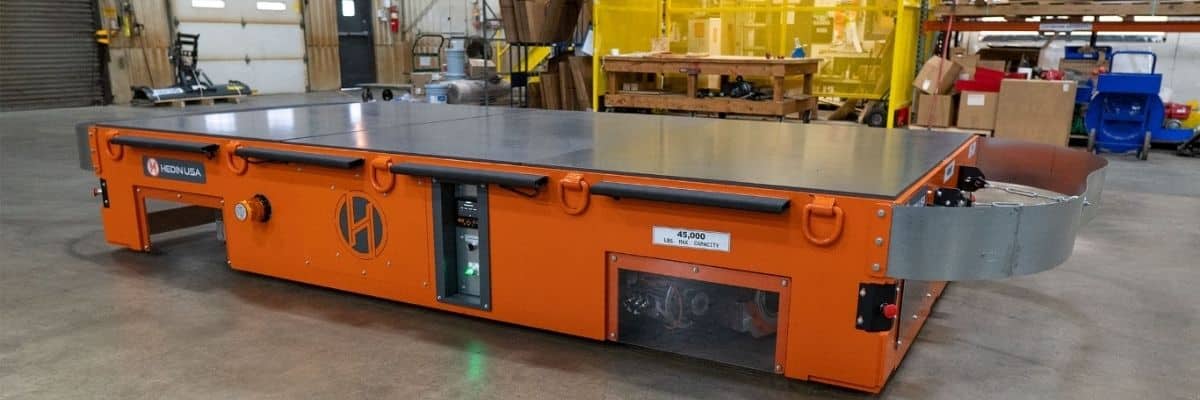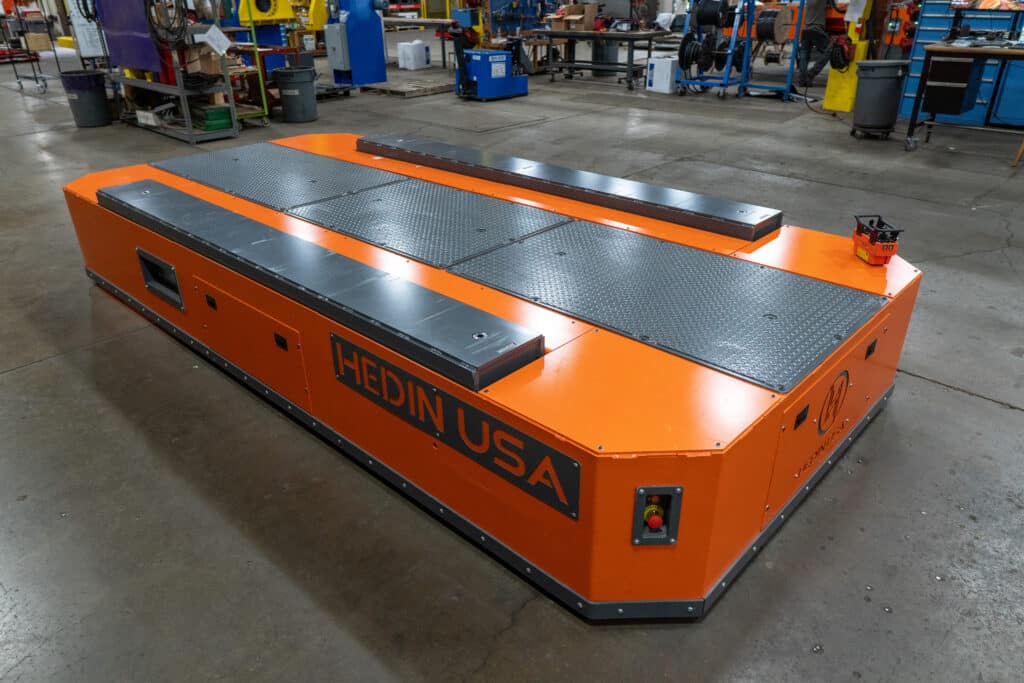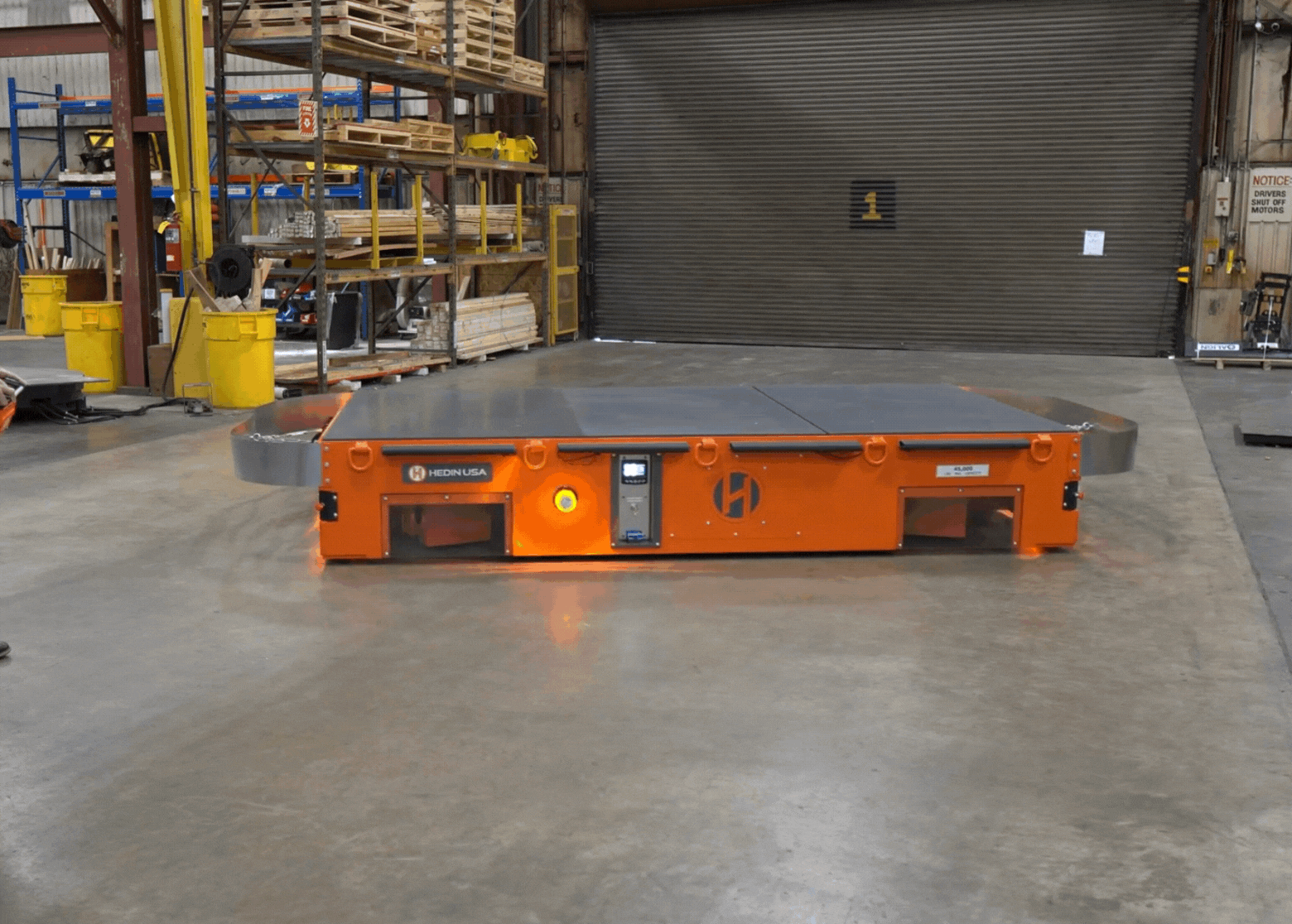From Engines to Molds: Flatbed Transporters for Every Load

January 30, 2025
Share:
Flatbed transporters are a reliable material handling solution for moving heavy loads within manufacturing facilities. With their ability to handle large, diverse objects and navigate complex environments, flatbed transporters are widely used across many industries. This article explores what flatbed transporters are, their features, and the use cases that make them valuable.
What Are Flatbed Transporters?
Flatbed transporters are battery-powered units that can drive under and pick up custom-designed fixtures or have loads placed on their top. Unlike traditional pallet transporters, flatbed transporters have an open, unobstructed top surface, which makes them ideal for carrying large or irregularly shaped items. They are often used to move objects weighing tens or even hundreds of thousands of pounds.
Depending on the facility’s specific requirements, flatbed transporters can be operated with a remote control or autonomous guidance systems. Their ability to lift and transport heavy objects while maintaining a low height makes them usable in different areas of a facility.

Features of Flatbed Transporters For Every Load:
1. Low Profile Design:
Flatbed transporters typically have a low overall height, enabling them to slide under racks, fixtures, or equipment. This feature minimizes space constraints and allows for easy integration into manufacturing lines.
2. High Load Capacity:
Our transporters can handle high-capacity loads, often exceeding 100,000 pounds, while making them usable for industries that deal with massive equipment or components.
3. Omnidirectional Movement:
Many flatbed transporters offer omnidirectional movement, allowing for easy navigation around tight corners and confined spaces.
4. Customizable Options:
Flatbed transporters can include features like lifts, spring-loaded tops, or conveyor systems.
5. Advanced Control Systems:
Operators can control the transporter’s movements with remote controls, fast/slow speed settings, and safety features like emergency stops.
Common Use Cases
Generally, flatbed transporters are used in manufacturing plants to move heavy objects, such as engines, wind components, molds, and dies, through various stages of production. Meanwhile, automotive manufacturers rely on these transporters for the efficient movement of stamping dies, and vehicle components within production lines. In industries like construction, mining, and energy, they are used for moving heavy machinery and parts. Their versatility allows for moving delicate or irregularly shaped loads, making them usable in almost any industrial setting.
Common Options for Flatbed Transporters
Overall, flatbed transporters are customizable, with various options available to meet specific needs:
- Lifts: These allow the transporter to raise loads for easy positioning or integration with other equipment.
- Spring-Loaded Tops: Designed to absorb shock, these tops reduce impact when heavy loads are placed on the transporter.
- Ridged or Contoured Surfaces: Ideal for securing coils, dies, or other objects that require additional stability during transport.
- Conveyors: Flatbed transporters can include conveyor systems on top when moving objects on a production line.
- Safety: Options such as emergency stops, bumper stops, and warning lights ensure safe operation in busy environments.
- Remote Control or Automation: Operators can choose between remote-controlled operation, semi-autonomous systems with line-following capabilities, or fully autonomous configurations for hands-free navigation.

Finally, Flatbed transporters are widely used for industries that demand heavy-duty material handling solutions. Their low profile, high load capacity, and customizable features make them a smart choice for a wide range of applications. With the ability to adapt to unique operational challenges, flatbed transporters continue to provide manufacturers with efficient and reliable solutions for their material handling needs.














